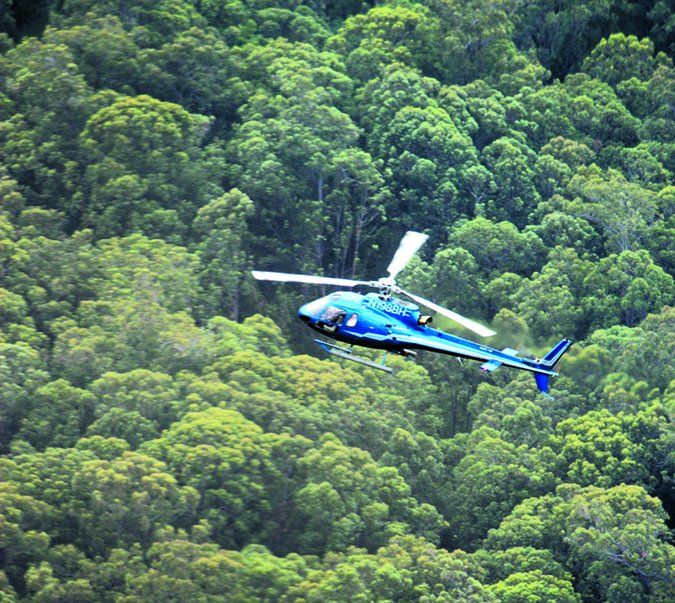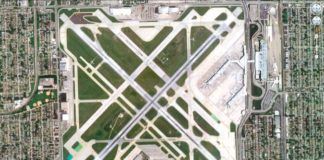Growing up, I enjoyed Vietnam War helicopter-pilot memoirs, like Robert Mason’s Chickenhawk. U.S. Army Air Cavalry helos were a lifeline for American troops, but clear landing zones were rare in the deep jungle. Pilots got creative when wounded soldiers and critical supplies were on the line. Mason describes literally hacking down trees with the main rotor of his UH-1 “Huey” to land where he needed to be.
I admired both the skill and guts of the pilots, and the amazing machines that allowed them to get in and out of tight spaces from just about any direction, and land vertically on a dime.
Nowadays, as an air traffic controller, the fun of working helicopters daily is that flexibility. However, there’s an underlying unpredictability that’s absent in fixed-wing operations and requires a unique combination of techniques and phraseology to handle.
Tarrance Kramer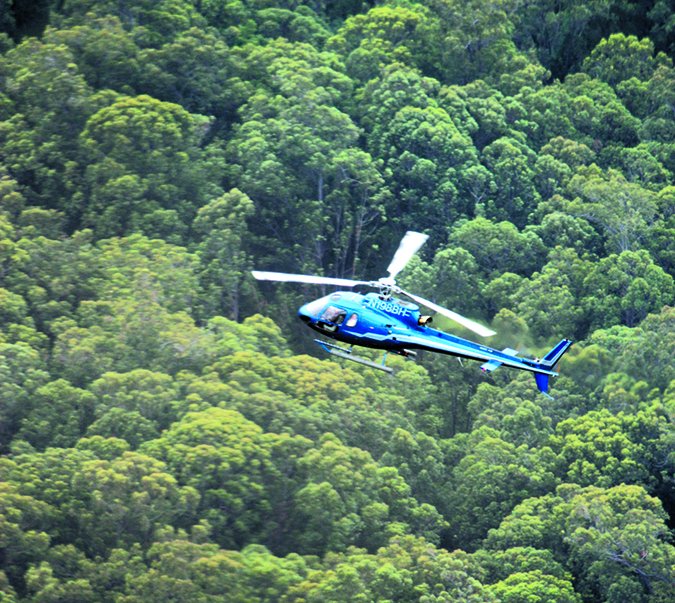
What Can(‘t) They Do?
When Tower clears a fixed-wing aircraft for takeoff, no matter the assigned departure heading, the aircraft will initially depart in the direction of its assigned runway. If I tell a Cessna 172, “Fly heading 050. Runway 9, cleared for takeoff,” I know he’s going to depart eastbound first, because the runway is obviously lined up with a 090 heading. Eventually, after climbing a bit, he’ll turn northeast. However, that initial takeoff roll will always be lined up with the runway.
But helicopters aren’t shackled to a runway. Imagine one asks to depart westbound with winds out of the northeast. If I clear him for takeoff “on course,” with no restrictions, will he swing around on the ramp, point his nose west, and take off directly westbound? Could he turn northeast, takeoff into the wind, and then turn westbound once he gets airborne? Will he depart eastbound and then swing south (or north) to go west? Without clarification, I just don’t know, and uncertainty is a dangerous thing in any ATC scenario.
I’ve seen that danger play out in real time. One day, our tower had a Skyhawk student solo shooting touch and goes on Runway 18. A helicopter requested a westbound departure from a ramp west of Runway 18. He was authorized to do so. West side + westerly direction should equal no brainer, right? Nope.
The helicopter lifted and flew straight east, directly at the Skyhawk, and passed just behind and below the Skyhawk. The Cessna pilot likely never saw the helicopter. A couple seconds different and it would’ve been a very bad day.
Similar incidents taught many controllers to clarify a helicopter’s intentions. Whenever I give a tower tour to helo pilots, I tell them their request should include their eventual route or destination, and how they want to depart. Example: “Tower, Helicopter Three Six Charlie requests to depart south initially, then exit the Class D to the east.” Easy. Now we know what to expect.
Swingin’ in the Wind
Some knowledge of helicopter performance helps controllers. Clearly, fixed-wing aircraft prefer to take off into the wind for ground run and minimum distance to climb. Many new controllers assume that a helicopter—since they can hover, takeoff from a fixed position, and turn around in place—doesn’t care about wind direction. That’s incorrect.
Reading all those war books taught me some helicopter terminology, like “translational lift.” Simply put, when a helo is moving slowly, the main rotor’s downwash creates vortexes and general turbulence immediately around it. As the helicopter picks up speed, it outruns that turbulence. At about 15-24 knots—depending on size and design—the turbulence lags behind and the rotor is now creating lift more efficiently in relatively “clean” air. That’s translational lift.
Imagine a small helicopter is hovering, ready to depart. Its translational lift begins at 15 knots, and there’s a northeasterly, 10-knot wind. Taking off into the wind, it just needs to gain five knots to hit the translational lift threshold. With a tailwind, it’ll need to hit 20 knots ground speed. Also, a fixed-wing aircraft doesn’t have to sweat the wind as much while taxiing, since its wheels provide friction and directional control. A non-wheeled helicopter that has to hover-taxi everywhere has to fight the wind to maintain directional control and keep from “weathervaning” as it maneuvers.
So, yes, the wind does matter to helicopters, and ATC needs to keep that in mind. Our rulebook—FAA Order 7110.65—in the Helicopter Takeoff Clearance section, 3-11-2 c says, “Unless agreed to by the pilot, do not issue downwind takeoffs if the tailwind exceeds 5 knots. NOTE−A pilot request to takeoff from a given point in a given direction constitutes agreement.”
Our tower works a ton of helicopters. When they call for a departure clearance, we’ve learned to verify both their final direction of flight, and their initial—i.e. takeoff—heading. Not doing so can make some waves.
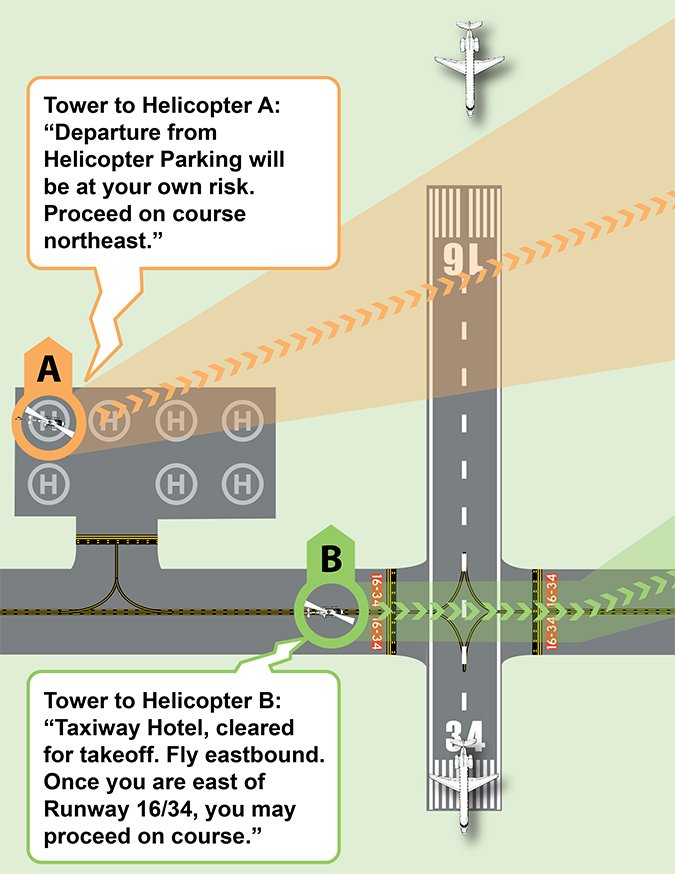
Risky Business
Helicopter departure clearances vary depending on whether they’re departing a movement or a non-movement area. Movement areas are airport surface areas that require an ATC clearance before entering them, namely taxiways and runways. Anything else—terminal ramps, FBO ramps, maintenance ramps, etc.—are generally classified as non-movement areas. ATC only provides sequencing and separation for traffic on the movement areas. Operations in the non-movement areas are out of our control.
Say we have a helicopter ready to depart an FBO ramp. We could taxi the helicopter to a runway, where Tower would issue a standard takeoff clearance: “Runway 18, fly runway heading. Cleared for takeoff.”
Helos can be cleared to takeoff from a taxiway, per 7110.65 3-11-2 a: “Issue takeoff clearances from movement areas other than active runways or in diverse directions from active runways, with additional instructions as necessary.” Basically, it’s a standard takeoff clearance, such as, “Medlife 3, Taxiway Hotel, fly heading 050, cleared for takeoff.” Obviously, here we have to specify the taxiway as the departure point, and we obviously can’t use “runway heading.”
But, what if the helicopter wants to depart directly from the FBO ramp, or even from off airport property? We have a couple of hospitals with helipads inside of our tower’s airspace. Since we controllers have no separation authority over either the FBO ramps or—naturally—any surface off airport property, we can’t clear someone for takeoff from it. If we used “cleared for takeoff” from a ramp or off-airport site, and the helo smacked into something around it, we’d bear some liability. Instead, we are required to transfer the departure risk to the pilot.
Responsibility is passed via 7110.65 3-11-2 b: “If takeoff is requested from non−movement areas, an area not authorized for helicopter use, or an area off the airport, and, in your judgment, the operation appears to be reasonable, use the following phraseology instead of the takeoff clearance in subpara a. PHRASEOLOGY−DEPARTURE FROM (requested location) WILL BE AT YOUR OWN RISK (additional instructions, as necessary). USE CAUTION (if applicable).”
So, if an air ambulance helicopter called us from a hospital helipad, our typical response would be, “Departure will be at your own risk. Use caution for crane, 200 feet AGL, one mile north.” The key phrase is “at your own risk,” advising the pilot that they alone are responsible for avoiding terrain and obstacles in their departure area. ATC will also issue cautionary traffic advisories concerning other aircraft in their vicinity and, once the helo’s airborne and in sight, or radar-acquired, provide separation services from other aircraft.
All of these concepts apply to arrivals as well, per 7110.65 3-11-6. Taxiway landing? “Cleared to land Taxiway India.” Landing off-airport or non-movement area? “Landing at Cloverdale Hospital will be at your own risk.” Wind? “Unless agreed to by the pilot, do not issue downwind landings if the tailwind exceeds 5 knots.”
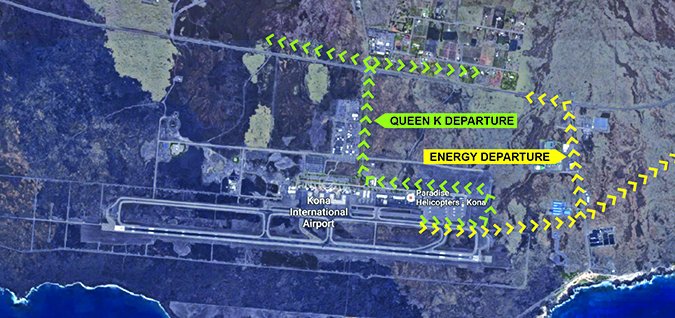
Putting up Walls
As you may have caught, both 7110.65 3-11-2 a and b specifically mention using “additional instructions, as necessary” for helicopter departures and 3-11-6 a and b include it for arrivals. Given a helicopter’s natural “go anywhere” capability, controllers need to ensure that helicopters can fit in with the flow of other traffic. That usually means those “additional instructions” turn into restrictions.
Controllers try to keep restrictions short and sweet, and often use plain language. It’s common sense. If a helicopter is taking off north of a runway with departing traffic, we can just say, “Remain north of Runway 9 until advised.” If I’ve got a medical helicopter transitioning east to west, but there’s a Cherokee taking off below, “Cross midfield. Maintain 1500 until west of Runway 18 for departing traffic.”
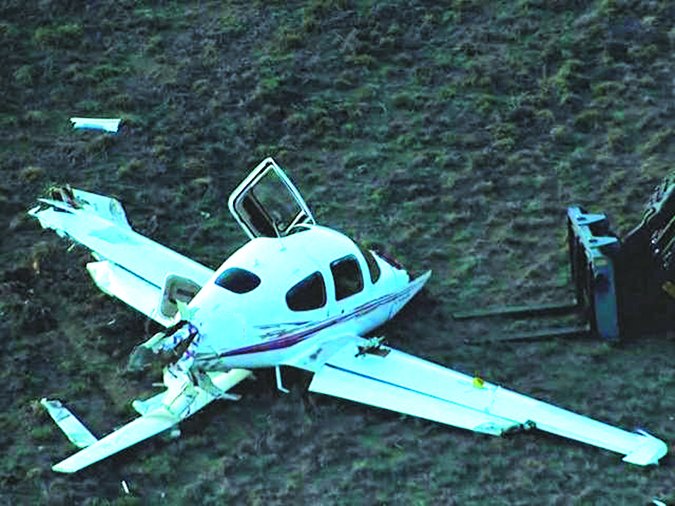
We can also clear them to land on specific parts of a runway, somewhat like a Land and Hold Short (LAHSO) operation. This is helpful if they’re landing on a runway that intersects another. “Traffic departing Runway 14. Runway 18, on the arrival end numbers, cleared to land.” We can also use a crossing taxiway as a reference point. “Runway 18, remain east of Taxiway Juliet, cleared to land.”
If a particular airport has a high volume of helicopter traffic, they might establish pre-determined routes. On the island of Hawai’i, Kona International Airport at Keahole (PHKO) works a lot of tourist helicopters. To keep things predictable, Kona Tower and the Paradise Helicopter Company agreed on special routes and procedures to keep the traffic flowing safely away from the airport’s single runway.
Working helicopters can actually be fun for controllers, as long we keep everyone on the same page. Through clear communication, solid controlling techniques, and a basic understanding of a helicopter’s needs and inherent flexibility, ATC can provide smooth operations for its rotary-winged customers.
Going for a Spin
Wake turbulence is just as real with helicopters as with any other aircraft of comparable size. The common UH-60 Blackhawk helicopter has a max takeoff weight of over 23,000 pounds. That’s twelve tons of lift the rotor needs to generate just to hoist it off the ground, and a lot of air gets mangled in its immediate vicinity and wake.
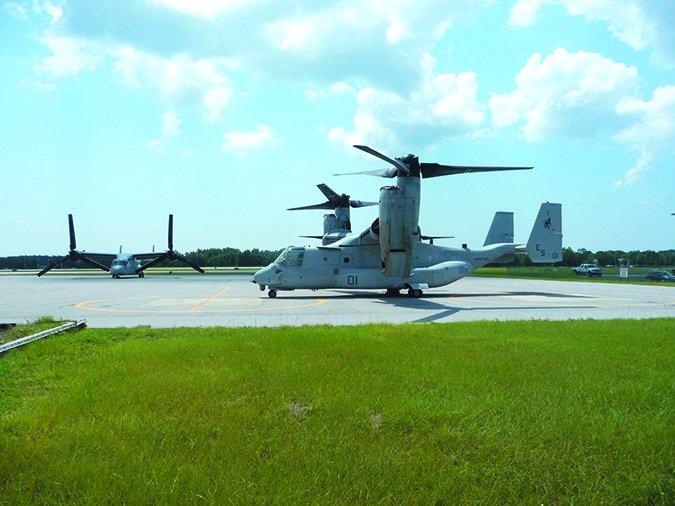
On December 5th, 2014, a student in a Cirrus SR20 learned this the hard way. As he was approaching for a touch and go, a Blackhawk helicopter departed. The Cirrus pilot even extended a little to allow for the Blackhawk’s wake, but it wasn’t enough. Approaching the flare, he entered the Blackhawk’s rotor wash, rolled left, tried to go around, but wound up cartwheeling into the grass. The airplane was ripped apart, but he luckily walked away with only minor injuries. There’s a chilling video of this on YouTube if you search for “Cirrus Blackhawk crash.”
AIM 7-3-7, “Wake Turbulence,” lays down some good words of warning: “In a slow hover taxi or stationary hover near the surface, helicopter main rotor(s) generate downwash producing high velocity outwash vortices to a distance approximately three times the diameter of the rotor… In forward flight, departing or landing helicopters produce a pair of strong, high-speed trailing vortices similar to wing tip vortices of larger fixed wing aircraft. Pilots of small aircraft should use caution when operating behind or crossing behind landing and departing helicopters.”
Controllers need to be careful about even taxiing helicopters near small aircraft, due to rotor-wash effects. A smaller helicopter like a Bell 206 Jet Ranger can disturb enough air to rock a Cessna Skyhawk’s world; imagine what heavy lifters like CH-53 Sea Stallions or CH-47 Chinooks can do. We’re told by 7110.65 in 3-11-1 d: “Avoid clearances which require small aircraft or helicopters to taxi in close proximity to taxiing or hover-taxi helicopters.”
The V-22 Osprey is a unique aircraft. This military transport commonly stops at civilian airports for fuel, training, and airshows. It’s a tilt-rotor design that takes off and lands like a helicopter, then angles its engines to cruise like an airplane. Due to a compact design created to fit aboard U.S. Navy amphibious carriers, its dual rotors are relatively small, but produce some serious power… and wake turbulence.
On June 13, 2012, two Ospreys were training at Eglin Air Force Base, Florida. They were flying at 80 knots at around 350 feet, in helicopter mode (rotors up), when the lead made a left turn. The trailing Osprey turned to follow. Its left rotor hit the lead’s rotor wash and the aircraft rolled hard left. The pilots managed to level the wings, but couldn’t arrest their descent rate. They clipped trees before striking the ground. All five on board were injured and the $78.5 million Osprey was a write-off. If an Osprey can do that to a 60,000-pound sibling, imagine what it could do to a light piston single.
Tarrance Kramer regrets not taking that -off Groupon offer for helicopter lessons way back. One of these days, he’ll find the time in between working traffic out in the Midwest.

